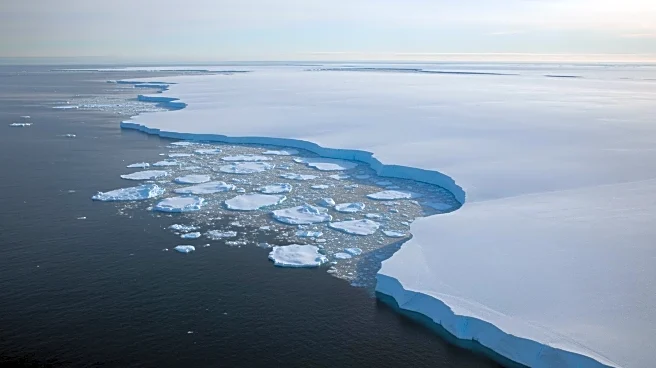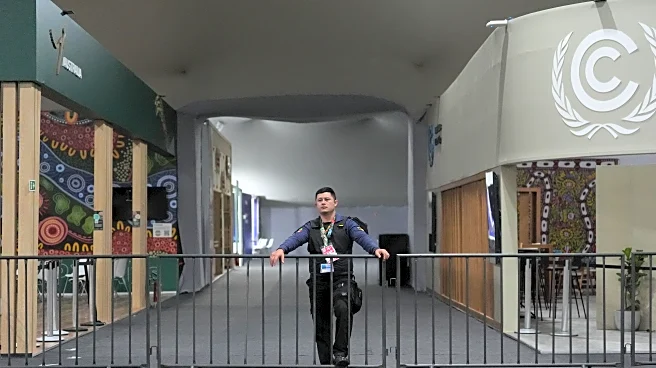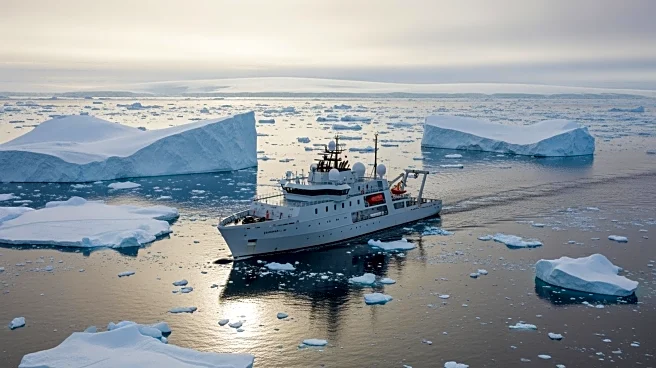What's Happening?
NASA's Earth Observatory has reported that Antarctic sea ice reached its seasonal winter maximum on September 17, 2025, but the coverage was notably low compared to historical standards. Satellite imagery
and data from the National Snow and Ice Data Center reveal significant reductions in ice extent around the Antarctic coastline. The ice expanded to just 6.88 million square miles, marking the third-lowest winter maximum in the 47-year satellite record. This year's peak was nearly 348,000 square miles below the 1981-2010 average, continuing a trend of unusually low sea ice extents since 2016. Antarctic sea ice plays a crucial role in Earth's climate by reflecting sunlight, influencing ocean circulation, and supporting ecosystems. Despite the observed reductions, researchers note the complexity of the Antarctic climate system, which involves interactions between ocean temperatures, atmospheric circulation, and natural climate variability.
Why It's Important?
The reduction in Antarctic sea ice has significant implications for global climate patterns and ecosystems. Sea ice influences weather patterns across the Southern Hemisphere and plays a role in regulating global temperatures by reflecting sunlight. The decline in ice extent could disrupt ocean circulation, affecting marine life and ecosystems that depend on predictable ice conditions. Species such as penguins, seals, and krill rely on stable ice environments for feeding and breeding. The observed changes may also signal broader environmental shifts, potentially impacting global climate policy and conservation efforts. Understanding these dynamics is crucial for predicting future climate scenarios and developing strategies to mitigate adverse effects.
What's Next?
Continued monitoring and research are essential to understand the long-term implications of Antarctic sea ice changes. Scientists will likely focus on analyzing the interactions between ocean temperatures, atmospheric conditions, and natural climate variability to better predict future ice patterns. These findings could inform international climate policy and conservation strategies aimed at preserving Antarctic ecosystems. Stakeholders, including environmental organizations and policymakers, may increase efforts to address climate change impacts and promote sustainable practices. Further satellite observations and climate models will be critical in assessing ongoing changes and guiding global responses.
Beyond the Headlines
The decline in Antarctic sea ice raises ethical and environmental concerns about human impact on climate systems. The changes may prompt discussions on the responsibility of nations to address climate change and protect vulnerable ecosystems. Long-term shifts in ice patterns could lead to increased international collaboration on climate research and policy development. The situation underscores the importance of balancing economic growth with environmental sustainability, highlighting the need for innovative solutions to reduce carbon emissions and promote renewable energy sources.












